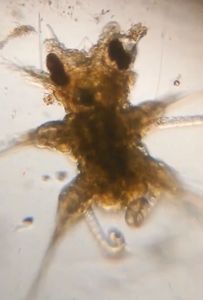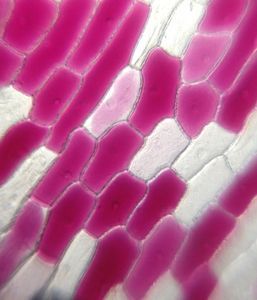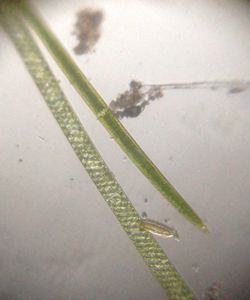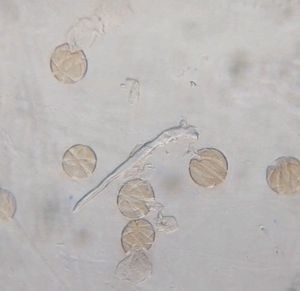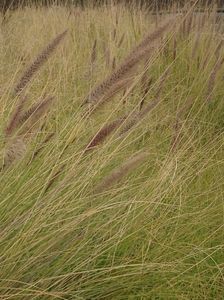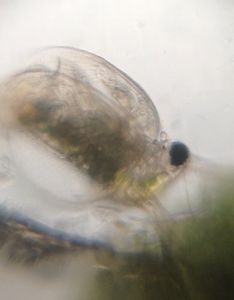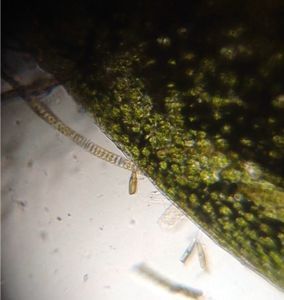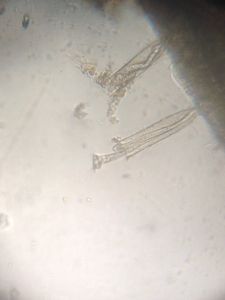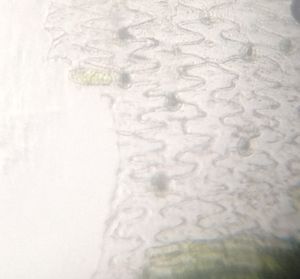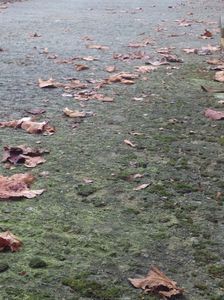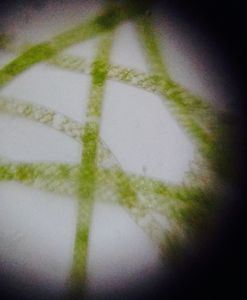The way I wish I had been taught.
 Sep 11, 2017 • 3:01 PM UTC
Sep 11, 2017 • 3:01 PM UTC Unknown Location
Unknown Location 140x Magnification
140x Magnification Microorganisms
Microorganisms
Cristina
Learn about the author...
19posts
52comments
1locations
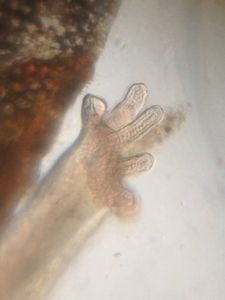
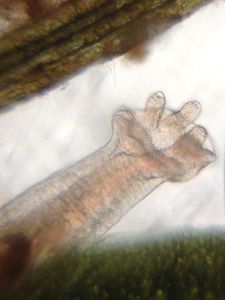
Dear Foldscope community:
In many occasions, since I have been using my foldscope microscope, I have had the opportunity to watch fresh water oligochaeta worms. They are very abundant in debris enriched waters and quite “huge” to be easily observed in detail. When I was a University student, I don´t remember seeing them “in vivo”,-of course we studied earthworms and other common and macroscopic annelida species- so you can imagine this is an unique occasion we are very lucky to be able to undergo….. I am a biologist and really love being it, but sometimes I presume studying Biology would have been so absolutely amazing having a foldscope in hand!
If you gather information about these animals (oligochaeta), you will end up knowing they breathe through their moist skin. This fact explains why they lack exoskeletons and need a humid habitat. You might agree this is completely theoretical and a little bit of logical reasoning, but learning biology should be much more than this. Here is just an example:
Firstly, please, watch next video which I recorded more than a year ago and kept it for today´s post. I do believe this living creatures exhibit very clear features and represent a very good example of what you can achieve using a foldscope. Dero spp – worm-, Spirogyra spp -algae- and Lemna minor – duckweed – root among others. Many morphological/anatomical structures are seen, especially the ones concerning the aquatic worm, but two of them have called my attention: the chloragen tissue, observed for the first time in my life…
In many occasions, since I have been using my foldscope microscope, I have had the opportunity to watch fresh water oligochaeta worms. They are very abundant in debris enriched waters and quite “huge” to be easily observed in detail. When I was a University student, I don´t remember seeing them “in vivo”,-of course we studied earthworms and other common and macroscopic annelida species- so you can imagine this is an unique occasion we are very lucky to be able to undergo….. I am a biologist and really love being it, but sometimes I presume studying Biology would have been so absolutely amazing having a foldscope in hand!
If you gather information about these animals (oligochaeta), you will end up knowing they breathe through their moist skin. This fact explains why they lack exoskeletons and need a humid habitat. You might agree this is completely theoretical and a little bit of logical reasoning, but learning biology should be much more than this. Here is just an example:
Firstly, please, watch next video which I recorded more than a year ago and kept it for today´s post. I do believe this living creatures exhibit very clear features and represent a very good example of what you can achieve using a foldscope. Dero spp – worm-, Spirogyra spp -algae- and Lemna minor – duckweed – root among others. Many morphological/anatomical structures are seen, especially the ones concerning the aquatic worm, but two of them have called my attention: the chloragen tissue, observed for the first time in my life…
…… and a group of terminal palps. See next.
I wondered for a long time trying to realize what could they be. Taking into account we have learnt these animals breathe through their body wall, you try to guess different processes related to this structures: secretion, reproduction, ..but not respiration. Nevertheless, and this is what I meant as real biology learning:
1º If you see those palps can get in an out (protude) constantly.
2º Have kept the water sample for some days, which probably means less available oxygen.
3º Notice the “blood” moving and see it reddens the palps which show an uneven surface, increasing the area in contact with water.
4º. Realize these structures can act as water turbines as they are covered with cilia and, therefore, remove poor oxygen sorrounding water for a richer one (see in next video).
1º If you see those palps can get in an out (protude) constantly.
2º Have kept the water sample for some days, which probably means less available oxygen.
3º Notice the “blood” moving and see it reddens the palps which show an uneven surface, increasing the area in contact with water.
4º. Realize these structures can act as water turbines as they are covered with cilia and, therefore, remove poor oxygen sorrounding water for a richer one (see in next video).
5º Etcetera, etcetera, etcetera,..
Only then, you are learning real biology. Indeed, these palps are gases exchange surfaces. They are GILLS!!! Wow!!! I hope you can observe a kind of loop inside every palp in the next image. It represents a vessel running along its inner surface.
Only then, you are learning real biology. Indeed, these palps are gases exchange surfaces. They are GILLS!!! Wow!!! I hope you can observe a kind of loop inside every palp in the next image. It represents a vessel running along its inner surface.
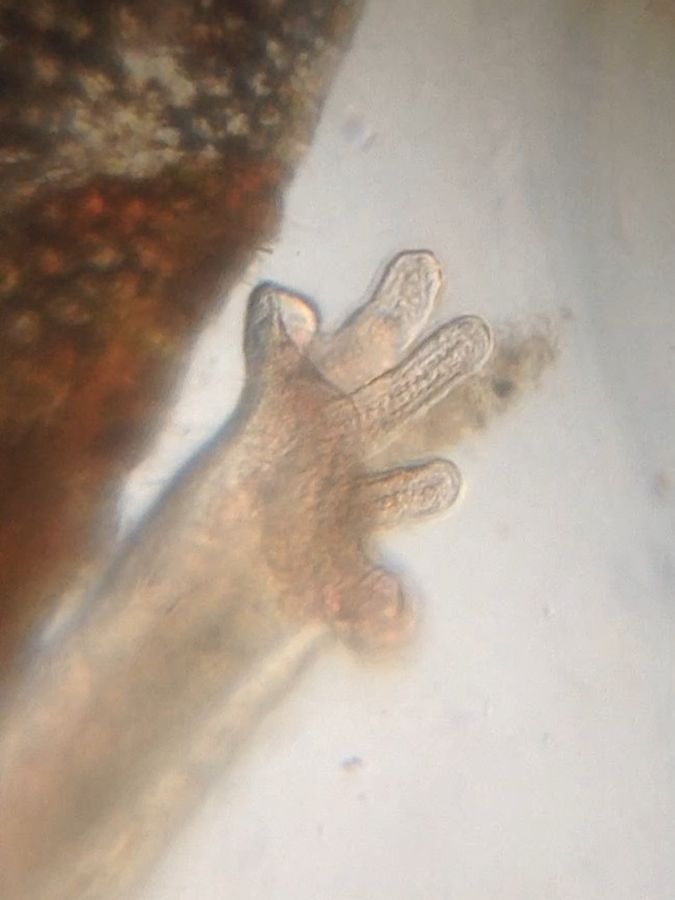
In conclusion, I feel there is a vast array of contents we should try not to teach as dogmas. This goal can be approached facilitating this kind of experiences in schools in order to achieve significant biology learning.
Thanks for reading.
Cristina Bosch
Thanks for reading.
Cristina Bosch
Sign in to commentNobody has commented yet... Share your thoughts with the author and start the discussion!
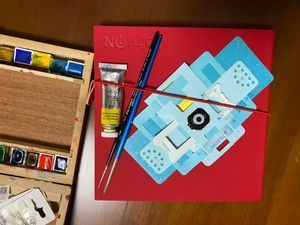
 0 Applause
0 Applause 0 Comments
0 Comments

